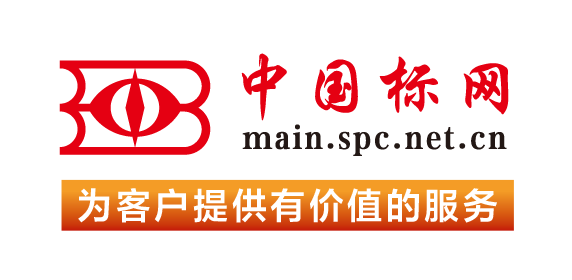【国外标准】 Standard Practices for Preparation of Magnesium Alloy Surfaces for Painting
本网站 发布时间:
2024-02-28
开通会员免费在线看70000余条国内标准,赠送文本下载次数,单本最低仅合13.3元!还可享标准出版进度查询、定制跟踪推送、标准查新等超多特权!
查看详情>>
适用范围:
This specification covers chemical treatments and anodic treatments for preparation of magnesium alloy surfaces for printing. The procedure for preliminary treatment of surfaces using alkaline cleaners and acid cleaners are presented. Class I, type I (chrome pickle) surface preparation procedure is applicable to all forms of magnesium except certain special alloys containing silver. Class I, type II (sealed chrome pickle) surface preparation procedure is applicable to all types and forms of magnesium-based alloys, subject only to the limitations of class I, type I treatment. Class I, type III treatment is applicable to all types and forms of magnesium-based alloys except M1 alloy and certain rare-earth alloys similar to EK30A. Class II, type I (galvanic dichromate treatment) produce black coatings of good protective and pain-base qualities, and is applicable to all alloys and forms of magnesium, including M1 alloy. Class II, type II treatment is applicable to all forms and alloys of magnesium. Class II, type III treatment is applicable to all forms and alloys of magnesium, free from attachments or inserts of other metals.1.1 These practices cover two classes of treatment for preparation of magnesium alloy surfaces for painting, as follows:Class I—Chemical Treatments.Class II—Anodic Treatments.In general, the latter treatments are the more protective of the two classes. Mechanical (abrasive) treatments, solvent cleaning, alkaline solution treatments, and acid pickles not resulting in protective conversion coatings are suitable preliminary treatments only for metal to be exposed under mildly corrosive (indoor) exposures. When a high degree of corrosion protection and paint adhesion are desired, as in many outdoor environments, surface preparation by one of the above conversion-coat classes is necessary. The hexavalent chromium based methods given are not recommended as hexavalent chromium is a known carcinogen.NOTE 1: Testing of Coatings—Quality control tests of coatings are frequently desirable, and these generally consist of exposures, with or without paint, to salt spray, humidity, or natural environments, with suitable procedures for assessing the degree of breakdown suffered after fixed time intervals. It is recommended that quality control tests of coatings shall be made as far as possible with high-purity material (for example AZ31A alloy),2 the inherent corrosion rate of which is relatively consistent from batch to batch and that precautions shall be taken to remove surface contamination before coatings are applied. Such contamination shall be removed by acid pickling to a depth of at least 0.001 in. (25 μm) per side.1.2 This standard may involve hazardous materials, operations, and equipment. This standard does not purport to address all of the safety concerns, if any, associated with its use. It is the responsibility of the user of this standard to establish appropriate safety, health, and environmental practices and determine the applicability of regulatory limitations prior to use. (See Note 11.)1.3 This international standard was developed in accordance with internationally recognized principles on standardization established in the Decision on Principles for the Development of International Standards, Guides and Recommendations issued by the World Trade Organization Technical Barriers to Trade (TBT) Committee.
标准号:
ASTM D1732-03(2023)
标准名称:
Standard Practices for Preparation of Magnesium Alloy Surfaces for Painting
英文名称:
Standard Practices for Preparation of Magnesium Alloy Surfaces for Painting标准状态:
Active-
发布日期:
-
实施日期:
出版语种:
- 推荐标准
- ASTM E3168-20a Standard Practice for Determining Low-Contrast Visual Acuity of Radiographic Interpreters
- ASTM E317-21 Standard Practice for Evaluating Performance Characteristics of Ultrasonic Pulse-Echo Testing Instruments and Systems without the Use of Electronic Measurement Instruments
- ASTM E3170/E3170M-18(2023) Standard Practice for Phased Array Ultrasonic Testing of Polyethylene Electrofusion Joints
- ASTM E3171-21a Standard Test Method for Determination of Total Silver in Textiles by ICP-OES or ICP-MS Analysis
- ASTM E3178-18 Standard Practice for Evaluating Static and Cidal Chemical Decontaminants against Bacillus Spores using Centrifugal Filtration Tubes
- ASTM E3182-20 Standard Practice for Preparing an Occupant Exposure Screening Report (OESR) for Substances in Installed Building Products
- ASTM E3186-19 Standard Guide for Use and Testing of Dry-Block Temperature Calibrators
- ASTM E3191-18 Standard Specification for Permanent Foaming Fixatives Used to Mitigate Spread of Radioactive Contamination
- ASTM E3192/E3192M-20 Standard Practice for Soft Armor Conditioning by Tumbling
- ASTM E3197-23 Standard Terminology Relating to Examination of Fire Debris
- ASTM E3199-22a Standard Guide for Alternative Allocation Approaches to Modeling Input and Output Flows of Secondary Materials and Related Recycling Scenarios in Life Cycle Assessment
- ASTM E3200-21 Standard Guide for Investment Analysis in Environmentally Sustainable Manufacturing
- ASTM E3208-20 Standard Specification for Minimum Equipment Requirements for Mobile Surface Contaminant Classification and Measurement Equipment
- ASTM E3209/E3209M-20 Standard Test Method for Pavement Thickness by Magnetic Pulse Induction
- ASTM E321-20 Standard Test Method for Atom Percent Fission in Uranium and Plutonium Fuel (Neodymium-148 Method)
 购物车
购物车 400-168-0010
400-168-0010













